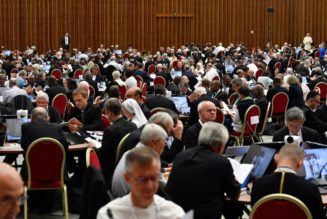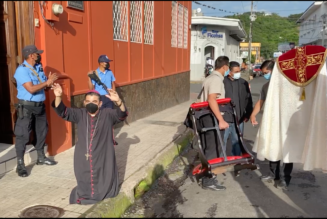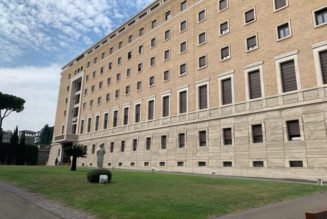By Phil Lawler ( bio – articles – email ) | Jul 20, 2021 | In Quick Hits
Horrified by today’s blockbuster story from Pillar, the ubiquitous Father James Martin, SJ, worries that if Catholic journalists are going to investigate cell-phone usage, we should all be worried. Why? If you could obtain my cell-phone records, you’d find them mighty boring. Why would someone assume that there’s damaging information in anyone’s private records?
But that’s just one quick thought, on a day when I set out to catch up with some of the more interesting commentary from other outlets:
- These are undeniably contentious times in the Catholic Church. Some people—including critics of the Catholic Culture enterprise—argue that loyal Catholics should not focus on the difficulties within the Church. “We are told to hide our blemishes because bad news doesn’t evangelize,” writes Eric Sammons in Crisis. “However, hiding blemishes isn’t evangelization, it’s marketing.” Sammons asks, rhetorically, why so many people seem to think that the Catholic Church is a house of cards, vulnerable to instant collapse if one supporting piece is removed. A confident Catholic—confident not necessarily in himself, but in the power of the Holy Spirit—should not be fearful of exploring the truth. “The strongest organizations are ones that are anti-fragile,” Sammons reminds us. “The Catholic Church is inherently anti-fragile: she has seen crisis after crisis and has weathered them all.”
- No one should panic, then, at the suggestion that the Church today is certainly facing a major crisis. A perceptive piece by Francis X. Rocca, in the Wall Street Journal, carries the headline: “Is Pope Francis Leading the Church to a Schism?” The focus of the piece is on the German hierarchy, with its “Synodal Path” toward radical change. Rocca’s coverage is balanced, but he notes that a) while claiming to represent the future of Catholicism, the German Church is losing members, by the hundreds of thousands, in the present; and yet b) Pope Francis has shown no inclination to hit the brakes as the German bishops barrel down the autobahn toward extinction.
- In First Things, Douglas Farrow explains the furor over Canada’s residential schools. Why were Catholic religious orders running these schools? Because they were enlisted to carry out a government program. Why were so many children undernourished? Because the government didn’t supply adequate funding. Why were they buried in unmarked graves? They weren’t, actually; the graves were marked with a simple wooden cross—which was all the paltry government budget allowed—and over the years the weather wore away those crosses. So why is the current outrage aimed against the Catholic Church rather than the Canadian government? Good question. Farrow observes: “We are hampered in this salutary work of honoring the dead by the smoke of burning churches, which tells us that the question of responsibility for that protracted ‘perfect storm’ has not been answered as it ought to be answered.”
- Dozens of fine pieces have already appeared in response to Traditionis Custodes, making dozens of excellent points. But Father Raymond de Souza might earn the prize for making the most salient points in the shortest space, in his analysis for the National Catholic Register. He observes that:
- The motu proprio explicitly rejects the judgment of Pope Benedict XVI, creating a clear contrast between the two Pontiffs;
- While Pope Francis speaks frequently of decentralized decision-making, this move shifts the balance heavily toward Rome;
- The Pope justified his action by citing the results of a survey, saying that the TLM had exacerbated divisions within the Church. Many bishops have responded by saying that they see no such problem in their dioceses; do their responses undermine the Pope’s analysis of that survey?
- Pope Francis implies that priests cause division by promoting the TLM. Father de Souza remarks: “Benedict’s Summorum Pontificum took the opposite approach, namely, that it was priests who were to respond generously to groups of the faithful who desired the older forms.”
- The Pope has granted faculties to priests of the Society of St. Pius X, despite their irregular canonical status. The SSPX will undoubtedly continue celebrating the TLM. Insofar as the motu proprio prevents other priests from celebrating the TLM in approved parishes, it will surely drive some people into the unapproved SSPX chapels: a curious strategy for ending divisions within the Church.
Sound Off! CatholicCulture.org supporters weigh in.
All comments are moderated. To lighten our editing burden, only current donors are allowed to Sound Off. If you are a current donor, log in to see the comment form; otherwise please support our work, and Sound Off!

There are no comments yet for this item.
Join Our Telegram Group : Salvation & Prosperity











